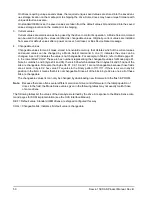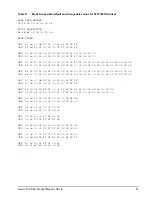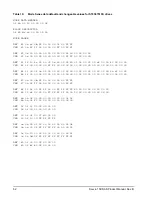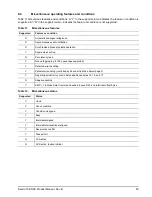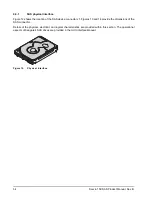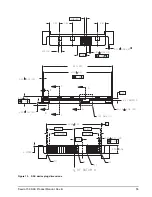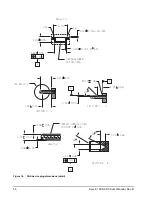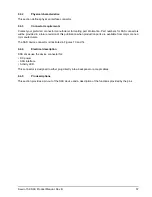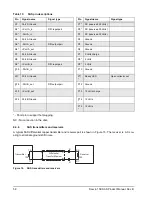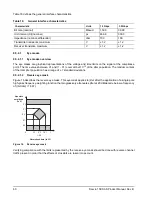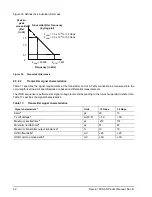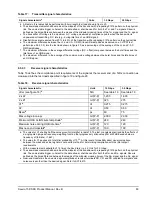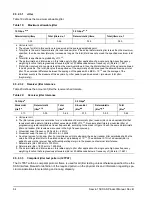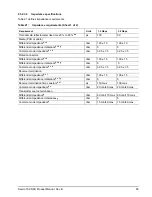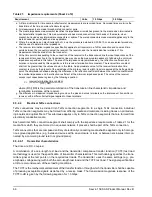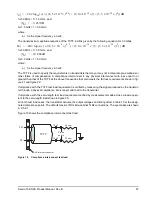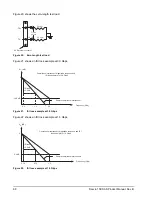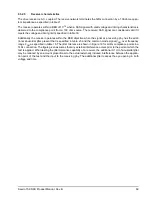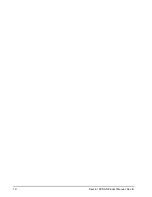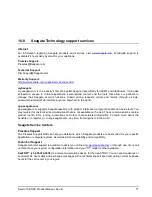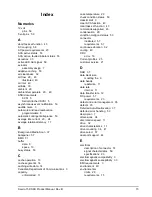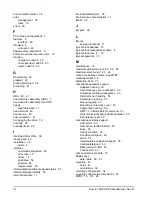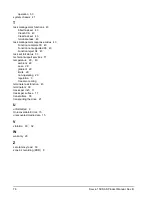
64
Savvio 15K SAS Product Manual, Rev. B
9.5.2.3.1
Jitter
Table 19 defines the maximum allowable jitter.
9.5.2.3.2
Receiver jitter tolerance
Table 20 defines the amount of jitter the receiver shall tolerate .
9.5.2.3.3
Compliant jitter test pattern (CJTPAT)
The CJTPAT within a compliant protocol frame is used for all jitter testing unless otherwise specified. See the
SAS Interface Manual for definition of the required pattern on the physical link and information regarding spe-
cial considerations for scrambling and running disparity.
Table 19:
Maximum allowable jitter
1.5 Gbps
m,
n
3.0 Gbps
m,
n
Deterministic jitter
q
Total jitterc
,
d
,
e
,
f
Deterministic jittere
Total jitterc
,
d
,
e
,
f
0.35
0.55
0.35
0.55
a Units are in UI.
b The values for jitter in this section are measured at the average amplitude point.
c Total jitter is the sum of deterministic jitter and random jitter. If the actual deterministic jitter is less than the maximum
specified, then the random jitter may increase as long as the total jitter does not exceed the specified maximum total
jitter.
d Total jitter is specified at a probability of 10
-12
.
e The deterministic and total values in this table apply to jitter after application of a single pole high-pass frequency-
weighting function that progressively attenuates jitter at 20 dB/decade below a frequency of ((bit rate) / 1 667).
f If total jitter received at any point is less than the maximum allowed, then the jitter distribution of the signals is allowed
to be asymmetric. The total jitter plus the magnitude of the asymmetry shall not exceed the allowed maximum total
jitter. The numerical difference between the average of the peaks with a BER < 10
-12
and the average of the
individual events is the measure of the asymmetry. Jitter peak-to-peak measured < (maximum total jitter -
|Asymmetry|).
Table 20:
Receiver jitter tolerance
1.5 Gbps
a
3.0 Gbps
a
Sinusoidal
jitter
b,c
Deterministic
jitter
e,f,h
Total
jitter
h
Sinusoidal
jitter
b,d
Deterministic
jitter
e,g,h
Total
jitter
h
0.10
0.35
0.65
0.10
0.35
0.65
a Units are in UI.
b The jitter values given are normative for a combination of deterministic jitter, random jitter, and sinusoidal jitter that
receivers shall be able to tolerate without exceeding a BER of 10
-12
. Receivers shall tolerate sinusoidal jitter of
progressively greater amplitude at lower frequencies, according to the mask in figure 18 with the same deterministic
jitter and random jitter levels as were used in the high frequency sweep.
c Sinusoidal swept frequency: 900 kHz to > 5 MHz.
d Sinusoidal swept frequency: 1.800 kHz to > 5 MHz.
e No value is given for random jitter. For compliance with this standard, the actual random jitter amplitude shall be the
value that brings total jitter to the stated value at a probability of 10
-12
. The additional 0.1 UI of sinusoidal jitter is
added to ensure the receiver has sufficient operating margin in the presence of external interference.
f Deterministic jitter: 900 kHz to 750 MHz.
g Deterministic jitter: 1.800 kHz to 1.500 MHz.
h The deterministic and total values in this table apply to jitter after application of a single pole high-pass frequency-
weighting function that progressively attenuates jitter at 20 dB/decade below a frequency of ((bit rate) / 1.667).
Содержание ST600MP0074
Страница 1: ...PRODUCT MANUAL Savvio 15K SAS 100407739 Rev B March 2007 ST973451SS ST936751SS ...
Страница 4: ...ii Savvio 15K SAS Product Manual Rev B ...
Страница 8: ......
Страница 10: ...2 Savvio 15K SAS Product Manual Rev B ...
Страница 14: ...6 Savvio 15K SAS Product Manual Rev B ...
Страница 30: ...22 Savvio 15K SAS Product Manual Rev B ...
Страница 34: ...26 Savvio 15K SAS Product Manual Rev B Figure 2 Typical ST936751SS current profile ...
Страница 50: ...42 Savvio 15K SAS Product Manual Rev B ...
Страница 78: ...70 Savvio 15K SAS Product Manual Rev B ...
Страница 85: ......

